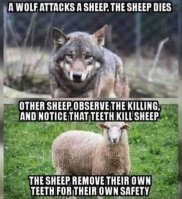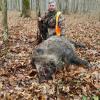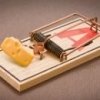All Activity
- Today
-
kiemtientmv joined the community
- Yesterday
-
Mel-ttn joined the community
-
worked on a lobster boat sailing out of Barmouth...........nearly 50 bloody years ago....christ time flys ...seems like yesterday......worked the lobsters around Bardsey during the summer and then in the winter on the LLanberis pump storge scheme
-
I watched a bit on the news yesterday with Andy Burnham (Mayor of Manchester and former Labour MP), I thought here we go, going to take the assaulted man’s side. But no, he stated he had seen the build up to the kicking and said there was a lot more to the story than what has been made public. Will be interesting 🤔
-
At the moment , I am smoldering around the seams , I think ole Billy Bell is going to have a sporting lay out , dress with or without clothing , over 75s can wear socks if they wish
-
Thank you. I suppose it was an 'industrial injury' and not really noteworthy to some ! 🙄
-
Olympics doesn't get any better than this.
-
When I was a younger man and between cars in about 1998, I bought a second hand W reg Honda matic (what was that 1979?) for a couple of hundred quid. That car came with metallic paint, auto box, electric windows, adjustable headlights, central locking and I think even cruise control. And everything worked. That car was amazing and at that time with a spec you would only find in a Roller. And what was the British car industry churning out at that time, when it wasn’t too busy being on strike? Austin allegro, princess, Morris marina / ital, maxi and then mastro, metro and montego. Dear Lord, the most hateful, unattractive and unreliable cars known to mankind. Our car industry absolutely 100% deserved to fail and was beyond rescue. I’m also reminded I learnt to drive in a Datsun Sunny with 250,000 miles on the clock and nothing wrong with it at all. I don’t think the GB car industry made a car that would or could last beyond 100,000 miles at that time.
-
"Better to burn out than fade away"
-
well that was totally underwelming.........must have been on a budget...........i thought celine dion sang well ...i dont like her or streisend....just grates on my nerves....... thought she was Canadian.....not french......... i can see that fire ballon coming to grief.....its burning for 2 weeks......when it catches fire it will proberly take a couple of catherdrals with it,,,
-
No , I was hoping for a better nights sleep after the previous nights image of a naked lady sitting above my head with what little hair I have got left and me gasping for air at the same time , no wonder I am going downhill fast 😛
-
I thought it was OK, but somewhat agree with the Critical Drinker's review.
-
The piano on one of the boats was very fired up. During the opening ceremony!
-
Free on Prime - a good watch.
-
I wouldn’t be best pleased either, didnt realise Sainsbury’s chickens were all Halal.
-
Lovely coast line around there Enjoy your break.
-
Have another read Specifically this bit - Or should I be watching the news 24/7 just so I can catch a brief glimps of the story of a police office getting stabbed, amongst the barrage of news about a police officer assaulting someone...................
-
It was on the news earlier that the Police have opened a criminal investigation into the officer's conduct. For the record, irrespective of what went on earlier, I think the officer was wrong. That said, I hope it doesn't turn into a witch hunt, fueled by an opportunistic lawyer and a mob.
-
I totally agree. It's OK Ditchy, you can be in our gang.
-
Im paying a visit tomorrow, will see what its like, forward parking booked so hopefully wont be too far to drag all the shopping back.
-
Just put this in here, amazing ride, amazing site and very peaceful! Garthyfog campsite near Barmouth
-
👏👏👏
-
It was on the main news on TV as well as the website, so perhaps a quick look might help broaden your worldview?
-
If this was .177 I'd be popping round tomorrow and just shoot lefty 👍👍
-
Yup,,,, it's 90° East, 180° West 🥳😆













